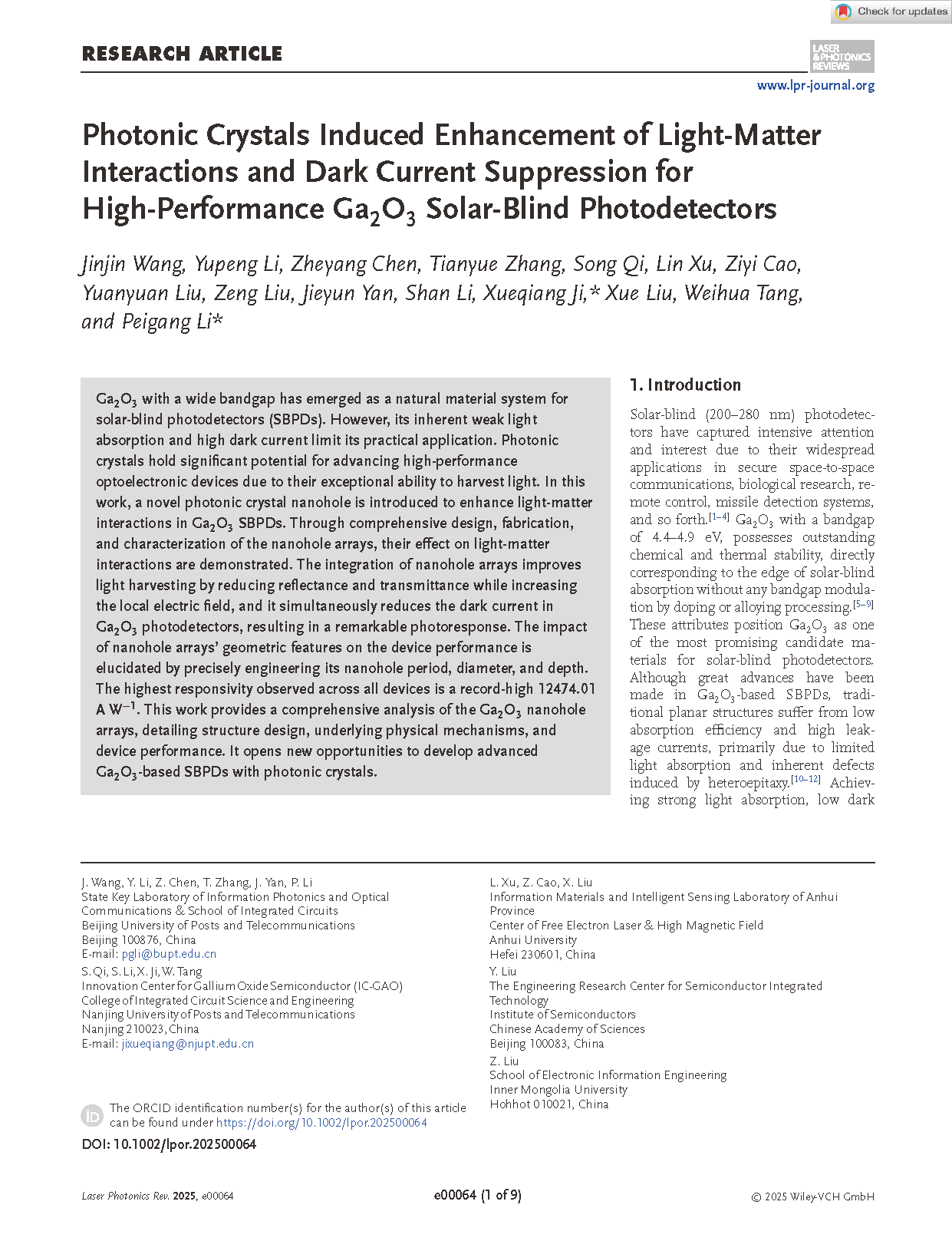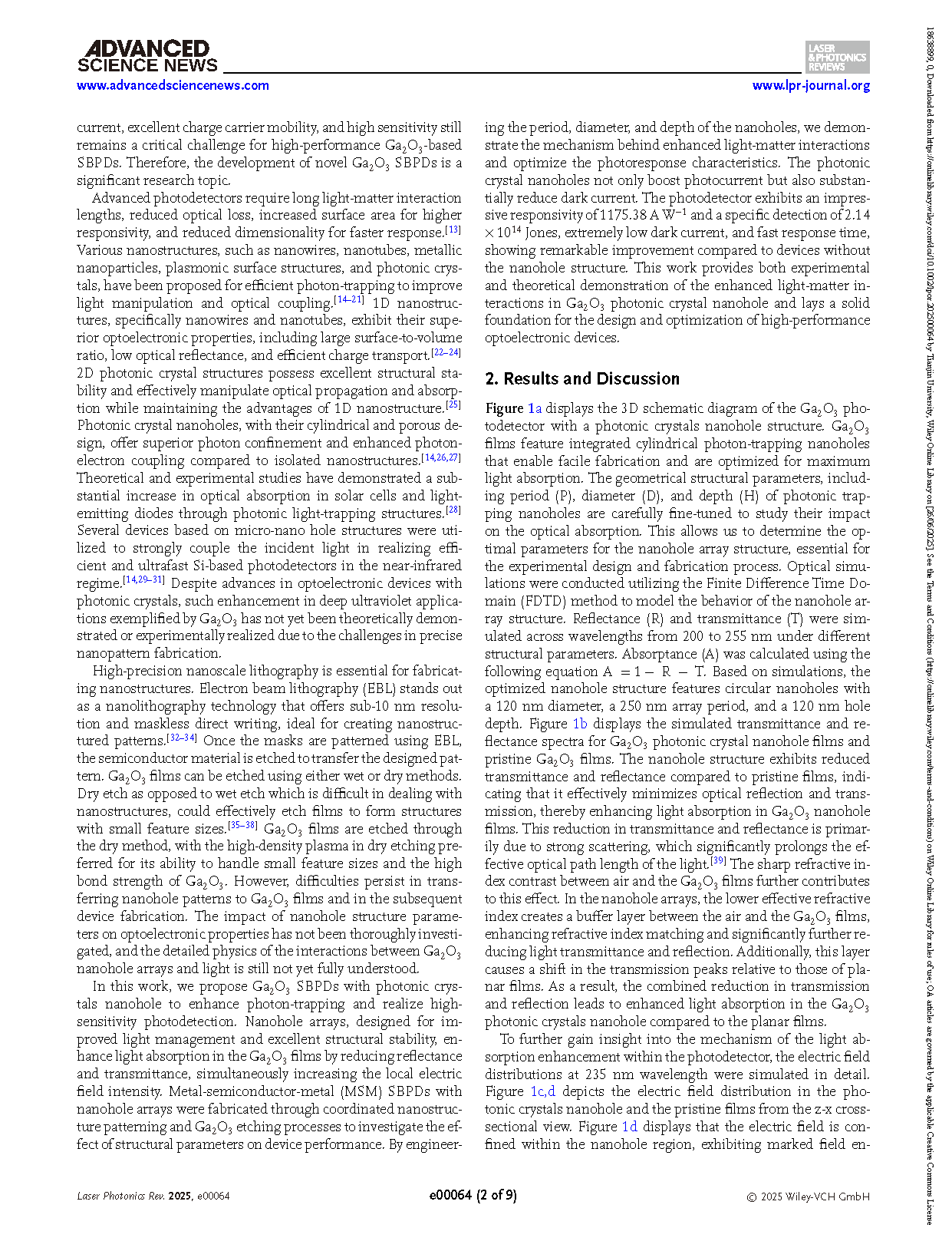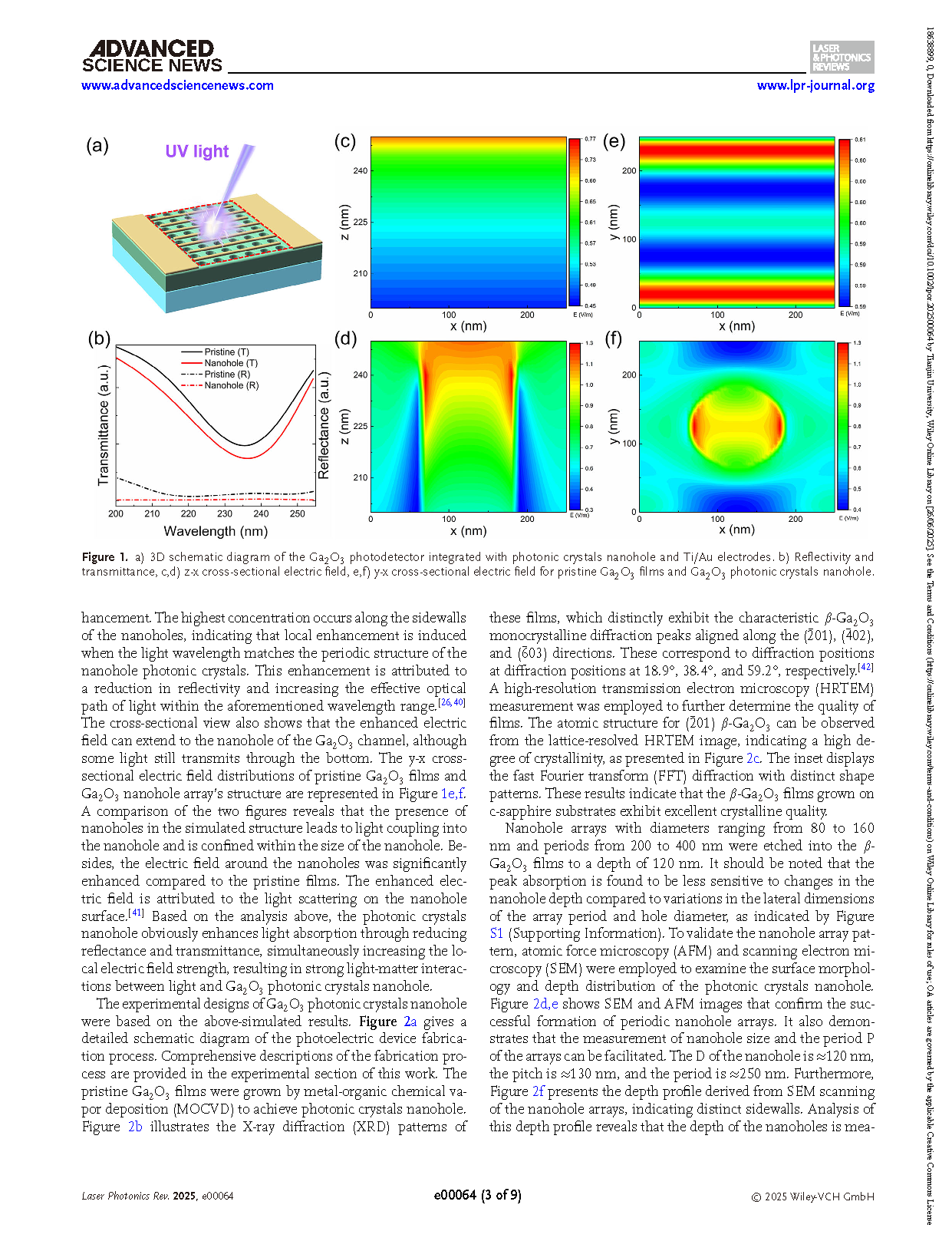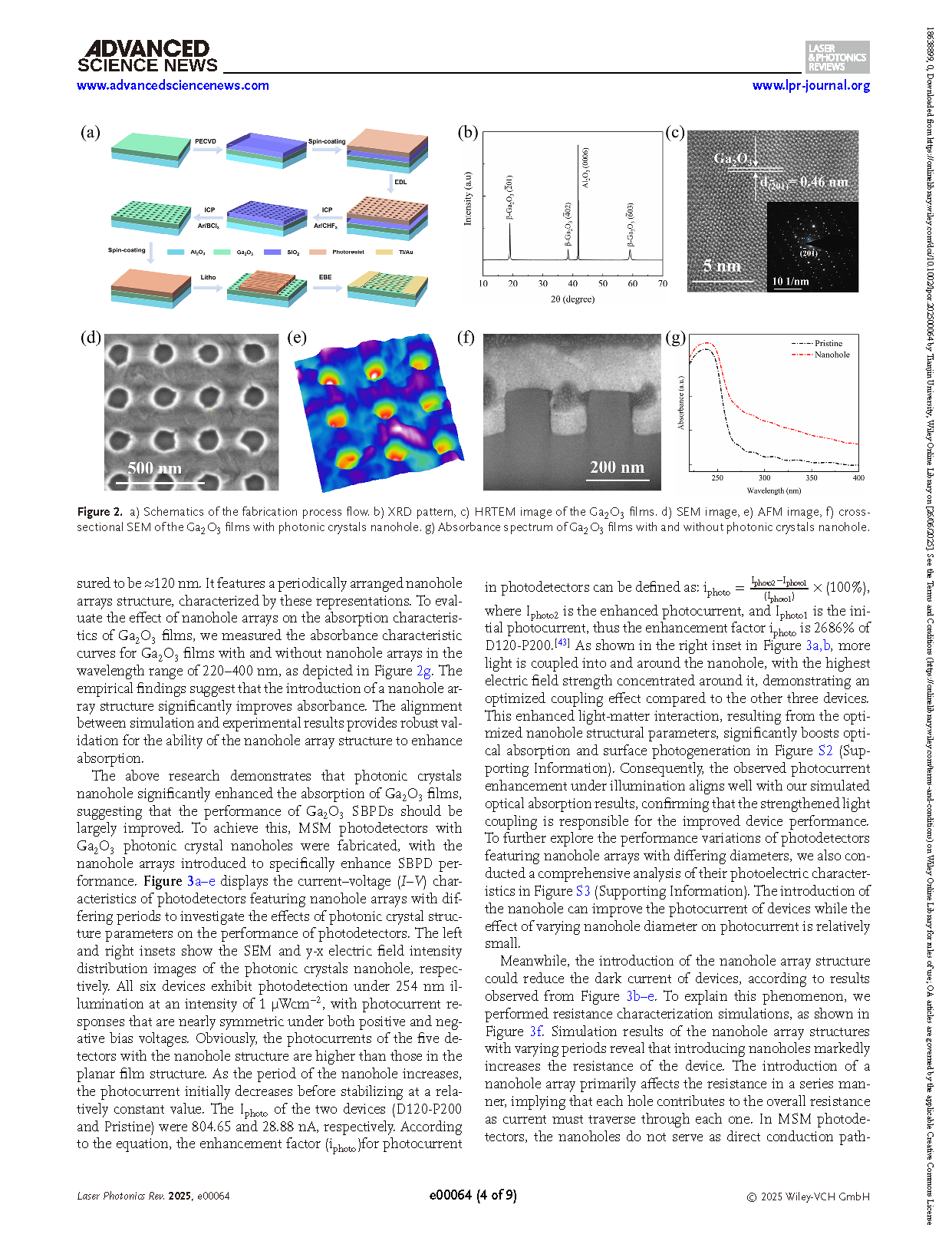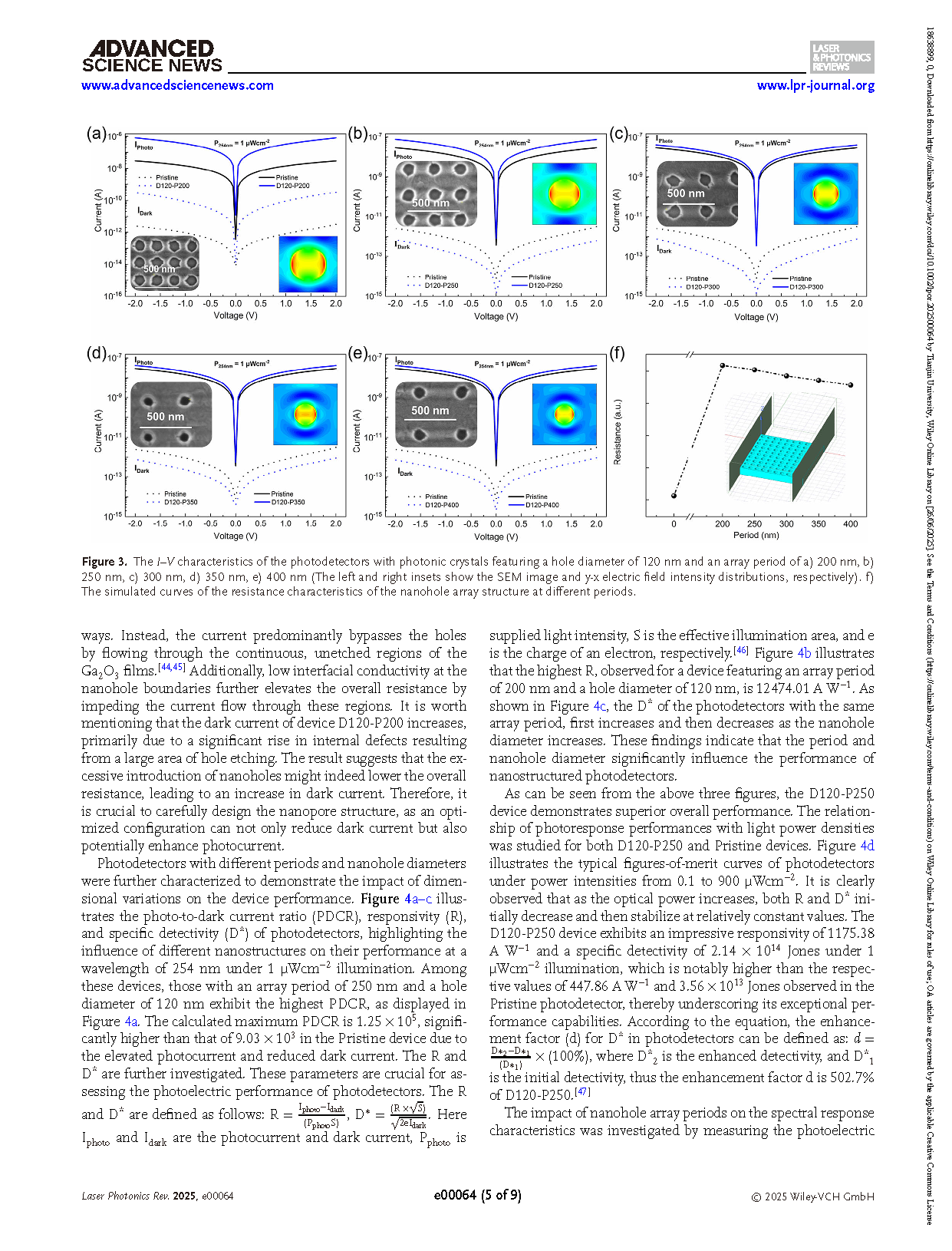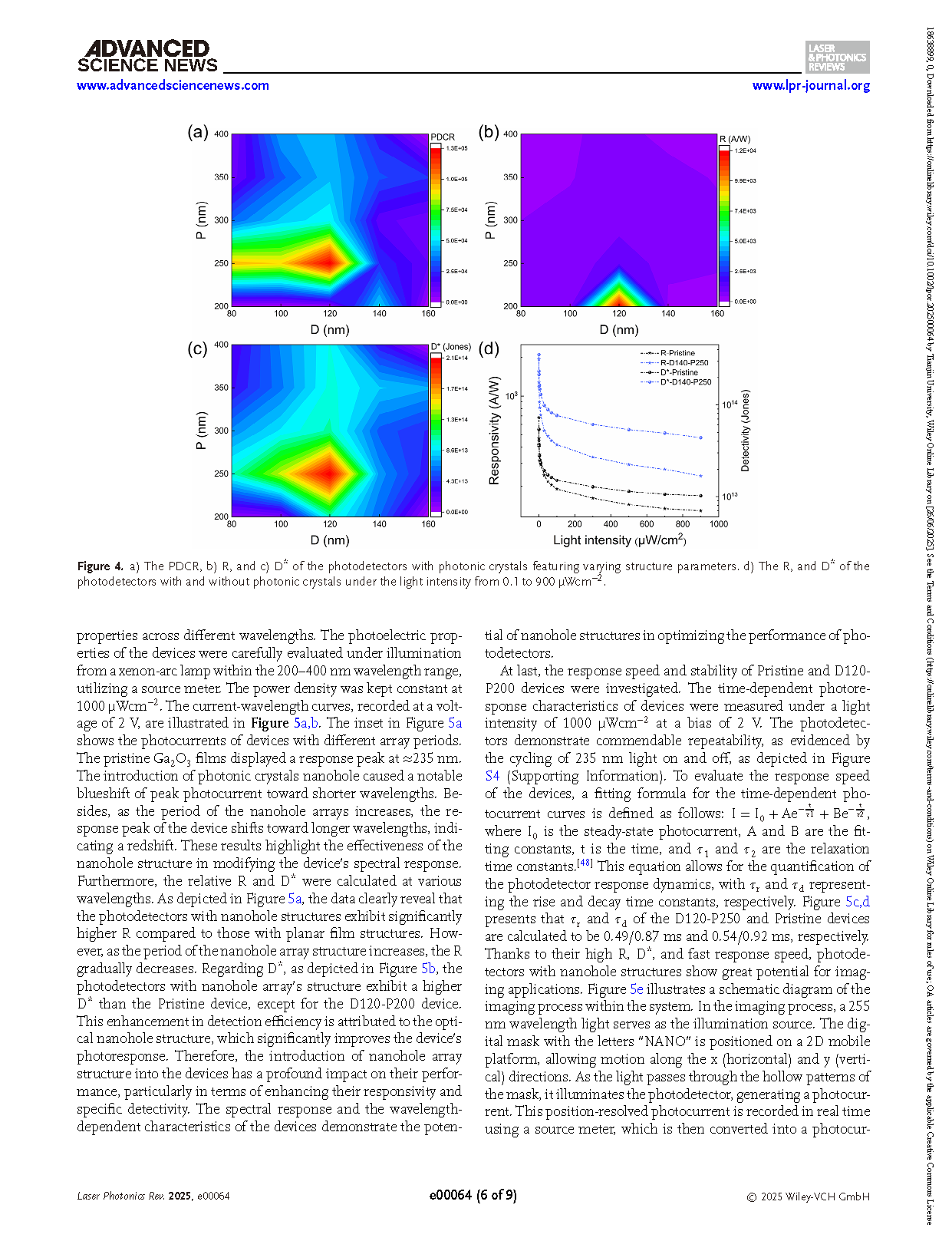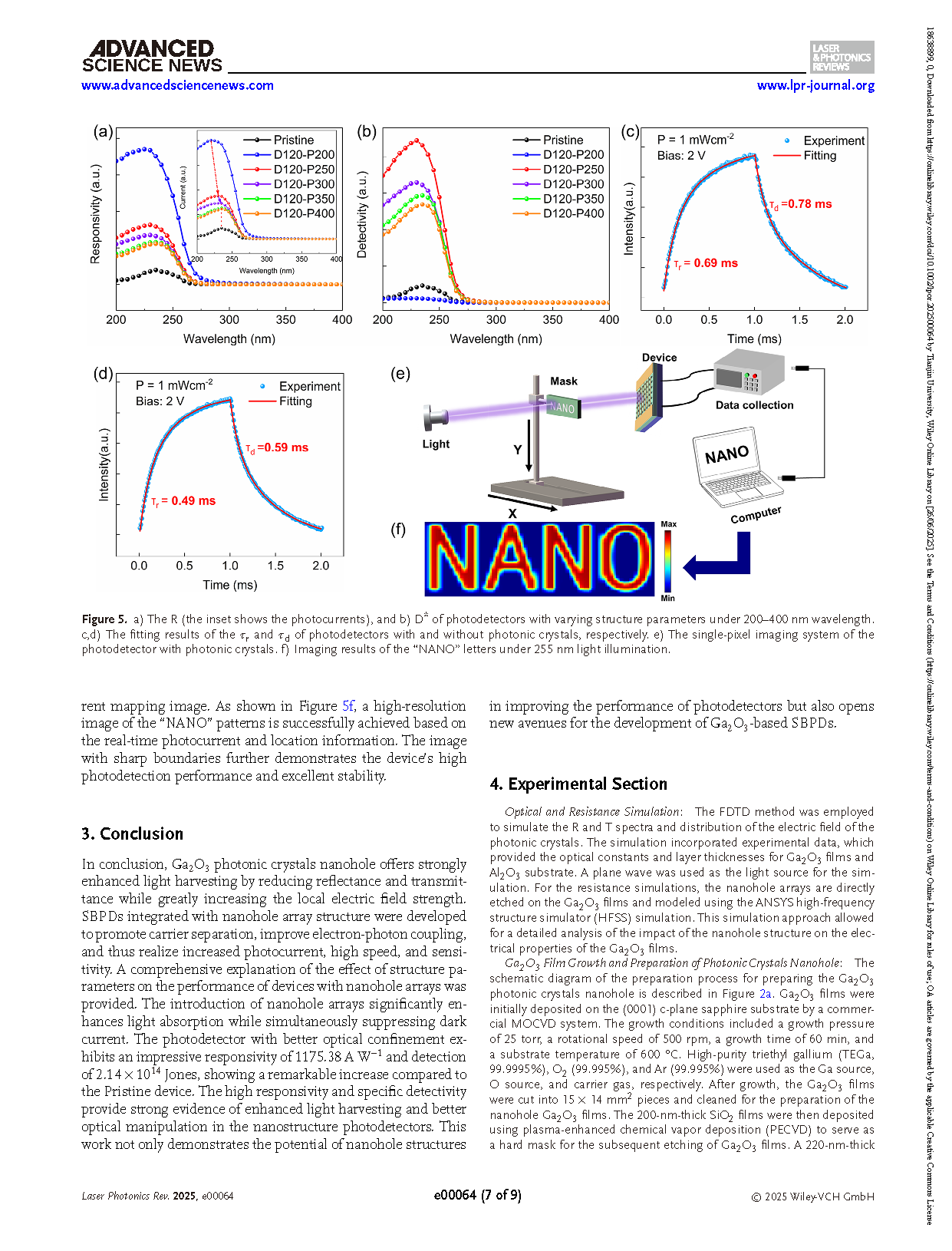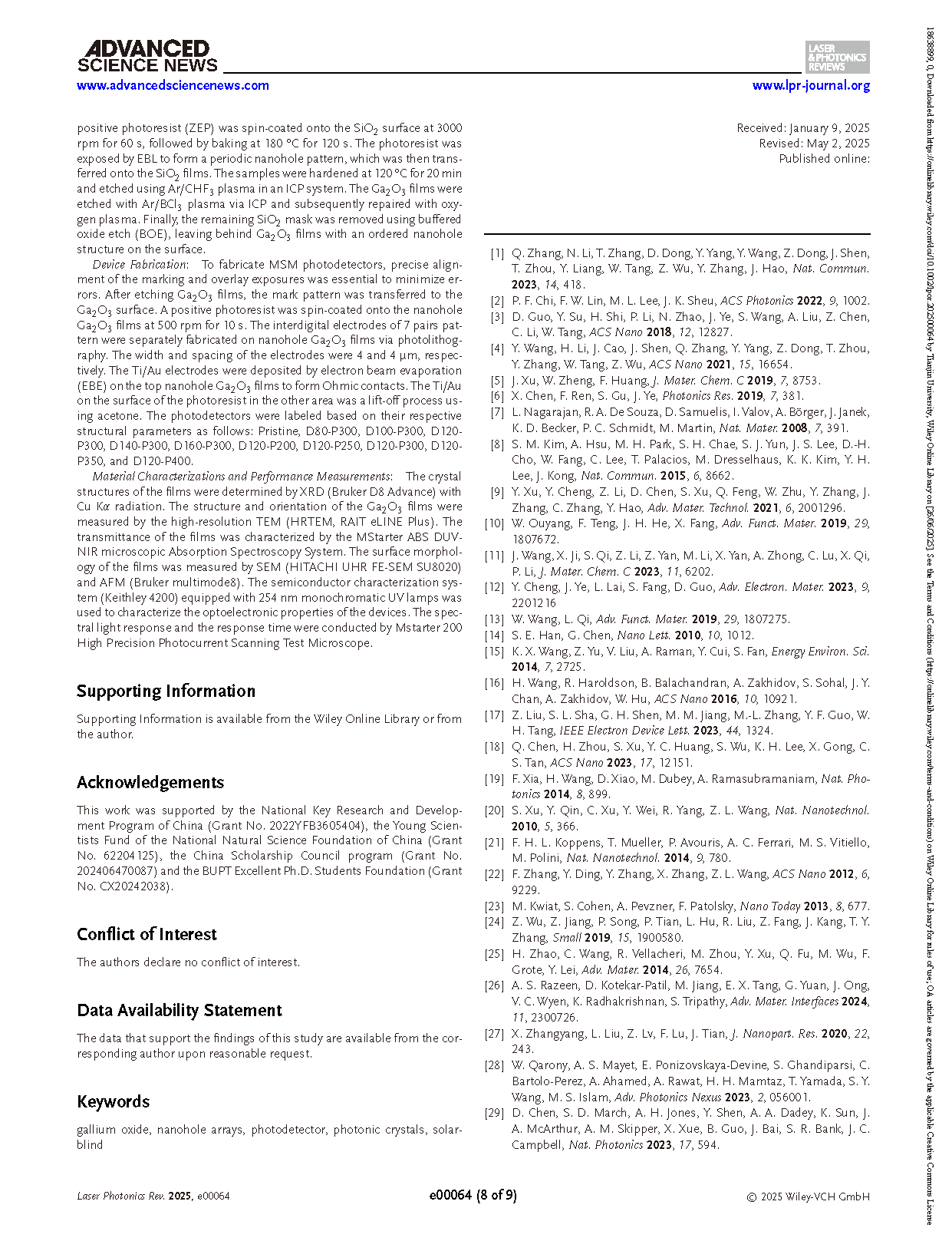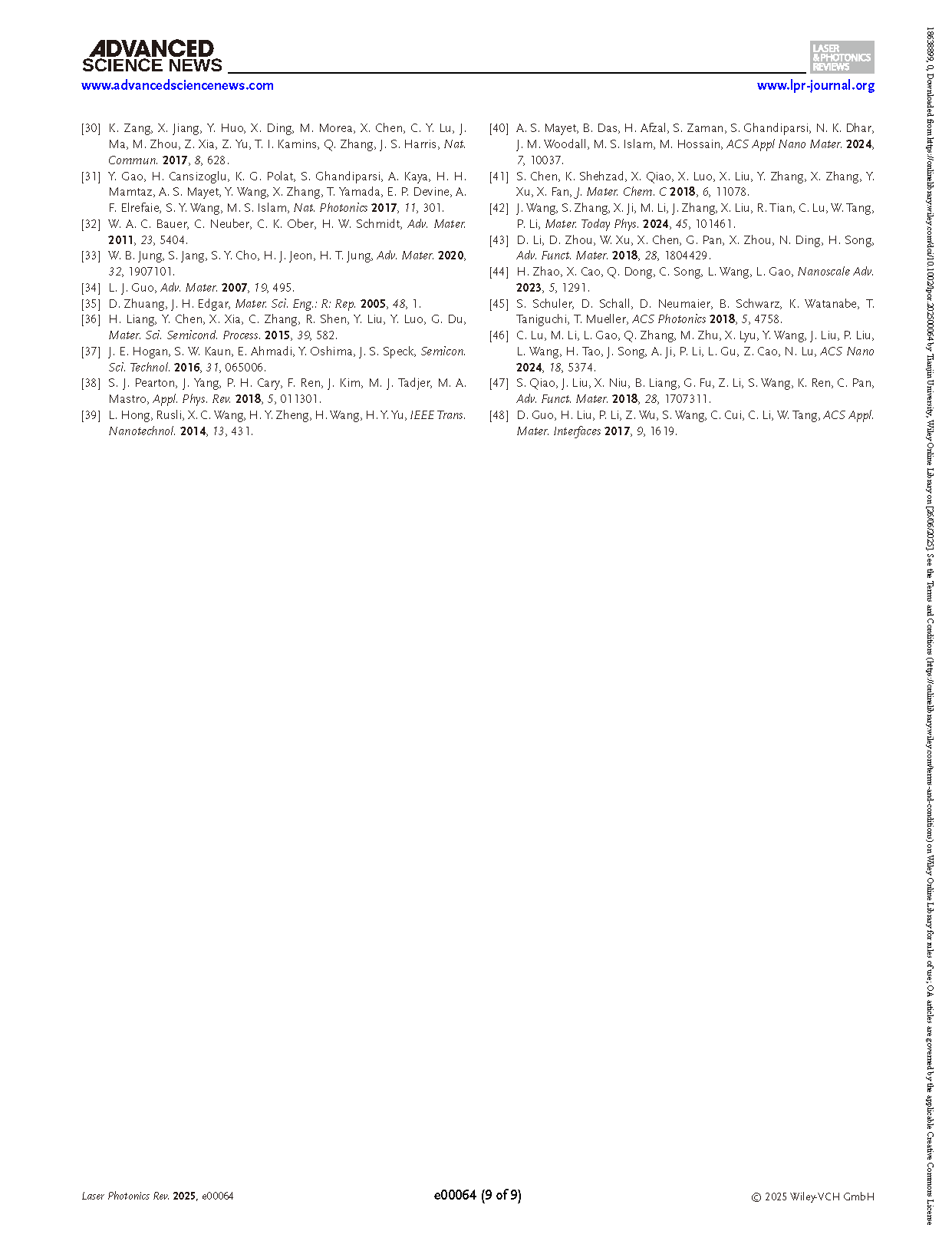
【Member Papers】Photonic Crystals Induced Enhancement of Light-Matter Interactions and Dark Current Suppression for High-Performance Ga₂O₃ Solar-Blind Photodetectors
日期:2025-07-15阅读:236
Researchers from the Beijing University of Posts and Telecommunications have published a dissertation titled "Photonic Crystals Induced Enhancement of Light-Matter Interactions and Dark Current Suppression for High-Performance Ga2O3 Solar-Blind Photodetectors" in Laser & Photonics Reviews.
Project Support
This work was supported by the National Key Research and Development Program of China (Grant No. 2022YFB3605404), the Young Scientists Fund of the National Natural Science Foundation of China (Grant No. 62204125), the China Scholarship Council program (Grant No. 202406470087) and the BUPT Excellent Ph.D. Students Foundation (Grant No. CX20242038).
Background
Solar-blind (200–280 nm) photodetectors have captured intensive attention and interest due to their widespread applications in secure space-to-space communications, biological research, remote control, missile detection systems, and so forth. Ga2O3 with a bandgap of 4.4–4.9 eV, possesses outstanding chemical and thermal stability, directly corresponding to the edge of solar-blind absorption without any bandgap modulation by doping or alloying processing. These attributes position Ga2O3 as one of the most promising candidate materials for solar-blind photodetectors. Although great advances have been made in Ga2O3-based SBPDs, traditional planar structures suffer from low absorption efficiency and high leakage currents, primarily due to limited light absorption and inherent defects induced by heteroepitaxy. Achieving strong light absorption, low dark current, excellent charge carrier mobility, and high sensitivity still remains a critical challenge for high-performance Ga2O3-based SBPDs. Therefore, the development of novel Ga2O3 SBPDs is a significant research topic.
Abstract
Ga2O3 with a wide bandgap has emerged as a natural material system for solar-blind photodetectors (SBPDs). However, its inherent weak light absorption and high dark current limit its practical application. Photonic crystals hold significant potential for advancing high-performance optoelectronic devices due to their exceptional ability to harvest light. In this work, a novel photonic crystal nanohole is introduced to enhance light-matter interactions in Ga2O3 SBPDs. Through comprehensive design, fabrication, and characterization of the nanohole arrays, their effect on light-matter interactions are demonstrated. The integration of nanohole arrays improves light harvesting by reducing reflectance and transmittance while increasing the local electric field, and it simultaneously reduces the dark current in Ga2O3 photodetectors, resulting in a remarkable photoresponse. The impact of nanohole arrays' geometric features on the device performance is elucidated by precisely engineering its nanohole period, diameter, and depth. The highest responsivity observed across all devices is a record-high 12474.01 A W−1. This work provides a comprehensive analysis of the Ga2O3 nanohole arrays, detailing structure design, underlying physical mechanisms, and device performance. It opens new opportunities to develop advanced Ga2O3-based SBPDs with photonic crystals.
Conclusion
In conclusion, Ga2O3 photonic crystals nanohole offers strongly enhanced light harvesting by reducing reflectance and transmittance while greatly increasing the local electric field strength. SBPDs integrated with nanohole array structure were developed to promote carrier separation, improve electron-photon coupling, and thus realize increased photocurrent, high speed, and sensitivity. A comprehensive explanation of the effect of structure parameters on the performance of devices with nanohole arrays was provided. The introduction of nanohole arrays significantly enhances light absorption while simultaneously suppressing dark current. The photodetector with better optical confinement exhibits an impressive responsivity of 1175.38 A W−1 and detection of 2.14 × 1014 Jones, showing a remarkable increase compared to the Pristine device. The high responsivity and specific detectivity provide strong evidence of enhanced light harvesting and better optical manipulation in the nanostructure photodetectors. This work not only demonstrates the potential of nanohole structures in improving the performance of photodetectors but also opens new avenues for the development of Ga2O3-based SBPDs.
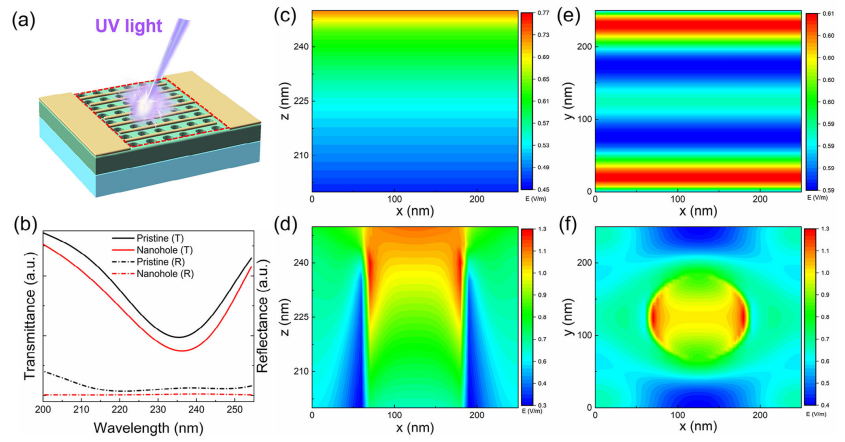
Figure 1. a) 3D schematic diagram of the Ga2O3 photodetector integrated with photonic crystals nanohole and Ti/Au electrodes. b) Reflectivity and transmittance, c,d) z-x cross-sectional electric field, e,f) y-x cross-sectional electric field for pristine Ga2O3 films and Ga2O3 photonic crystals nanohole.
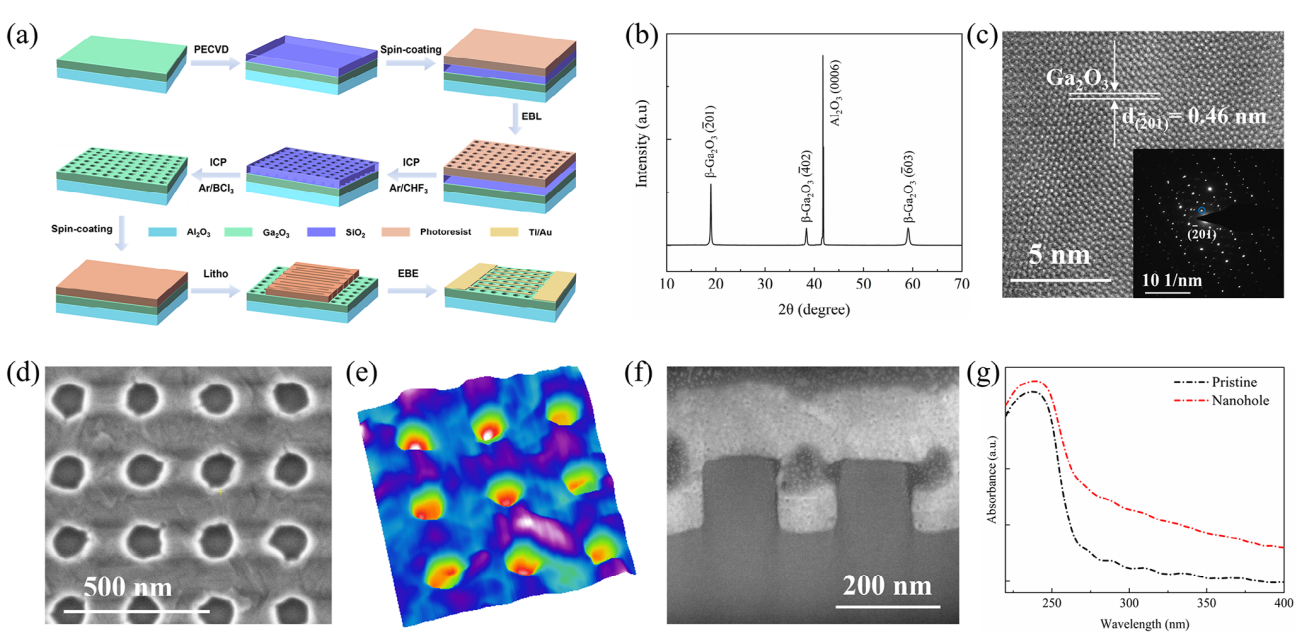
Figure 2. a) Schematics of the fabrication process flow. b) XRD pattern, c) HRTEM image of the Ga2O3 films. d) SEM image, e) AFM image, f) cross-sectional SEM of the Ga2O3 films with photonic crystals nanohole. g) Absorbance spectrum of Ga2O3 films with and without photonic crystals nanohole.
DOI:
doi.org/10.1002/lpor.202500064
